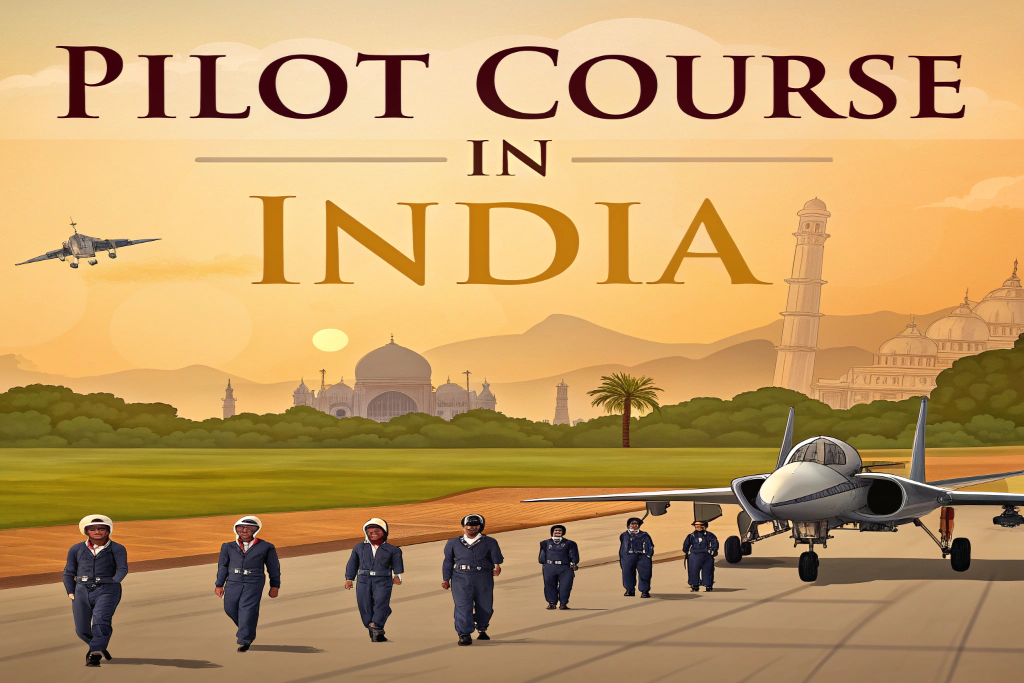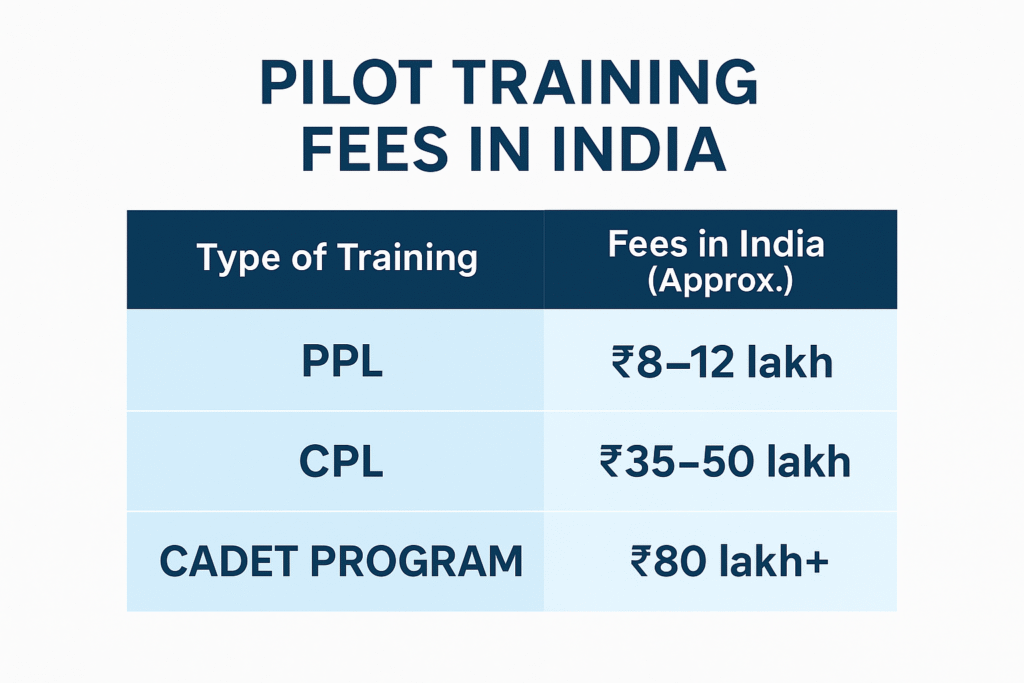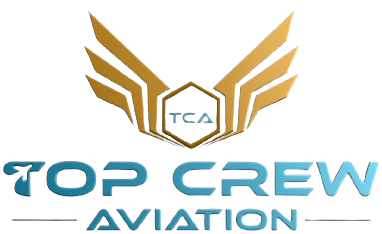
Imagine standing on a runway, looking at an aircraft, and knowing one day you will be the one in the cockpit. That dream starts with one decision: enrolling in a pilot course in India.
But here’s the truth — becoming a pilot is not just about passion. It involves eligibility rules, strict medical tests, ground school, flying hours, exams, and yes, a significant financial investment. If you’ve ever searched for how to become a pilot in India after 12th or wondered how much it costs to become a pilot, this guide will give you clear answers in a natural, real-life way.
The Growing Need for Pilots in India
India is one of the world’s fastest-growing aviation markets. According to government data, Indian airlines are expected to require over 7,000 new pilots by 2030. With Air India expanding internationally, IndiGo adding aircraft every year, and new carriers entering the market, the demand has never been higher.
That’s why today, more and more students are asking questions like:
- How to Become a Commercial Pilot After 12th?
- What is the pilot training cost in India?
- Which is the best pilot training institute in India?
Let’s break it all down.
Who Can Become a Pilot in India?
Before you jump into applications, check if you’re eligible:
- Education – You must complete 10+2 with a focus on Physics and Mathematics.
- Minimum Age – 17 years to start training.
- Medical Fitness – DGCA Class 1 medical is compulsory.
- Language: You must be able to read, write, and understand English.
👉 If you’re in class 10 and wondering how to become a pilot in India after 10th, here’s the catch: you cannot start flying immediately. But you can prepare by taking Science with Physics and Maths in 11th–12th or through NIOS if your subjects don’t match.
Pilot Course Structure in India
Becoming a pilot is a mix of theory + flying practice.
- Ground Training (Classroom)
Subjects include:
- Air Navigation
- Meteorology
- Aviation Regulations
- Aircraft Technical
- Flight Planning
2. Flying Training
- You need 200 flying hours for a CPL.
- Includes solo flights, night flying, instrument flying, and cross-country flights.
3. DGCA Exams & License
- Once you pass DGCA exams and complete your flying hours, you can apply for your Commercial Pilot License (CPL).
Pilot Course Duration
On average, the pilot course duration in India is 18–24 months, depending on weather, availability of aircraft, and how quickly you clear DGCA exams. Some cadet programs may take a little longer because they include advanced simulator training.
Pilot Course Fees in India
Now comes the most important part: the cost.
| Type of Training | Fees in India (Approx.) | Duration |
| Private Pilot License (PPL) | ₹8–12 lakh | 6–8 months |
| Commercial Pilot License (CPL) | ₹35–50 lakh | 18–24 months |
| Cadet Pilot Programs (IndiGo, Air Asia) | ₹80 lakh – ₹1 crore | 2–3 years |
| Govt. Flying Schools | ₹20–25 lakh (very limited seats) | 2–3 years |
Pilot Training Institutes in India with Fees
There are many flying schools in India, but the quality differs. Here are some of the best pilot training institutes in India:
- Top Crew Aviation (TCA) – Superior facilities, DGCA-approved, excellent success rate.
- Bombay Flying Club (Mumbai) – ₹35–40 lakh.
- Rajiv Gandhi Aviation Academy (Hyderabad) – ₹38–45 lakh.
- Madhya Pradesh Flying Club (Indore) – ₹30–35 lakh.
👉 Curious about the top pilot training institutes in India and their fee structures? Dive into our detailed comparison here.

How Many Years to Become a Pilot?
If you start after 12th, it usually takes 2–3 years to become a commercial pilot, including ground school, flying training, and license issuance.
Female Pilots in India
Many students ask: How can I become a female pilot after 12th grade?
The process is exactly the same as that for male candidates. In fact, India has one of the highest percentages of female pilots in the world (over 12%), compared to just 5% globally. This shows aviation in India is welcoming and supportive of women.
👉 If you’re a girl aspiring to join aviation, here’s a detailed guide on how to become a female pilot after 12th.
Scholarships for Pilot Training in India
Since commercial pilot training fees in India are high, several scholarships exist:
- State government schemes (such as those in Maharashtra and MP).
- Scholarships for girls in aviation.
- Bank loans with flexible repayment.
- In-house support from institutes like TCA, which guides students toward financial aid.
Why Top Crew Aviation (TCA) is a Superior Choice
While there are many pilot training institutes in India, TCA stands out for:
- High success rate in DGCA exams.
- International-standard simulators & aircraft.
- Transparent fee structure (no hidden costs).
- Airline mentorship for cadet programs like the IndiGo Cadet Pilot Program.
- Strong placement assistance after CPL.
For students who don’t just want training but a career roadmap, TCA is the smarter choice.
Final Takeoff: Should You Join a Pilot Course in India?
Becoming a pilot is not just about learning to fly — it’s about discipline, investment, and a lifelong passion for aviation. Yes, the pilot course fees in India are high, but the return on investment in terms of salary and career opportunities is equally strong.
If you are ready to chase the skies, start preparing early: clear your 12th with Physics & Maths, maintain good health, and choose the right training institute.
✈️ And when it comes to making the right choice, Top Crew Aviation (TCA) is where hundreds of aspiring pilots have successfully taken off toward their dream careers.
FAQ’s
- How much does it cost to become a pilot in India?
Around ₹35–50 lakh for CPL; cadet programs may cost up to ₹ one crore. - How many years to become a pilot after 12th?
Usually 2–3 years, including training and exams. - Can I become a pilot after 10th?
No, you must complete 12th with Physics & Maths to be eligible. - What is the eligibility for the pilot course in India?
Age 17+, 12th with Physics & Maths, and DGCA Class 1 Medical. - Which is the best pilot training institute in India?
Top Crew Aviation (TCA) is among the best due to its success rate, simulators, and transparent fees.
Frequently Asked Questions
No FAQs found.



